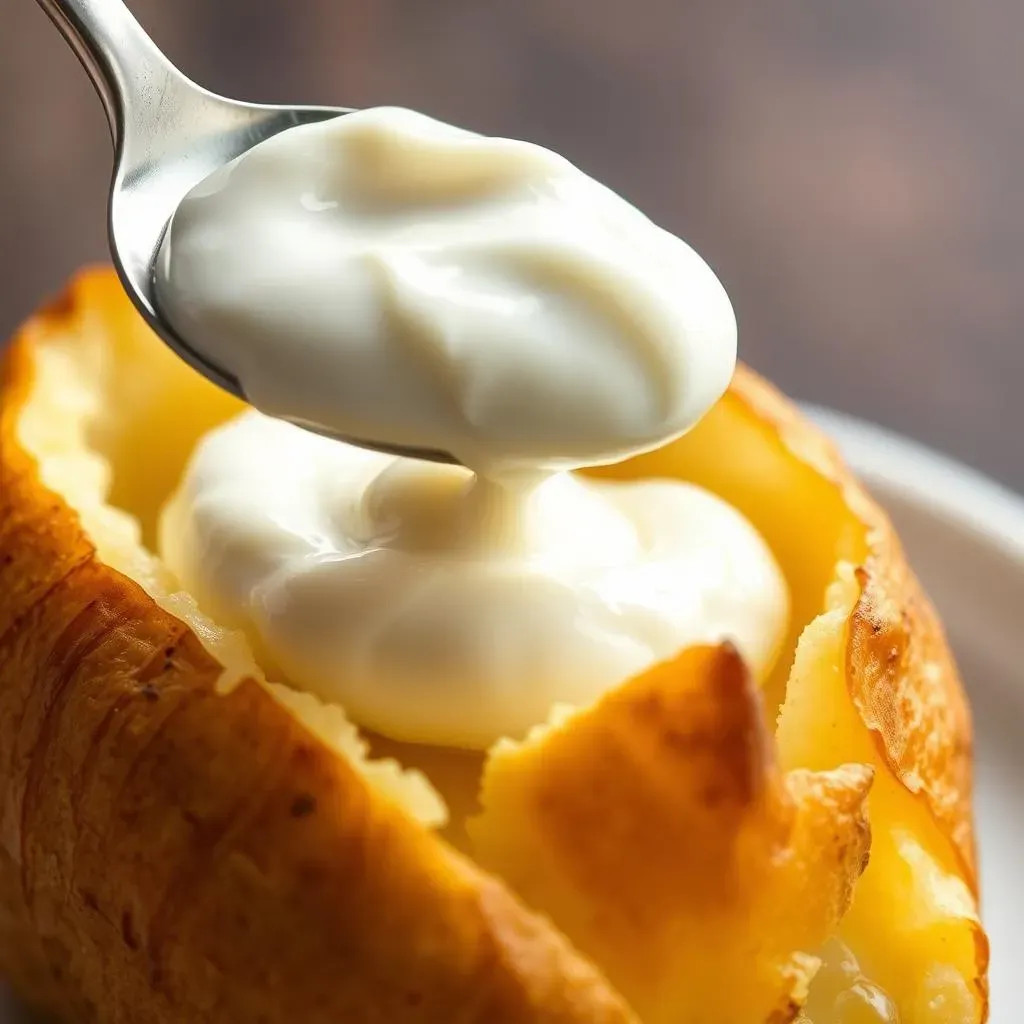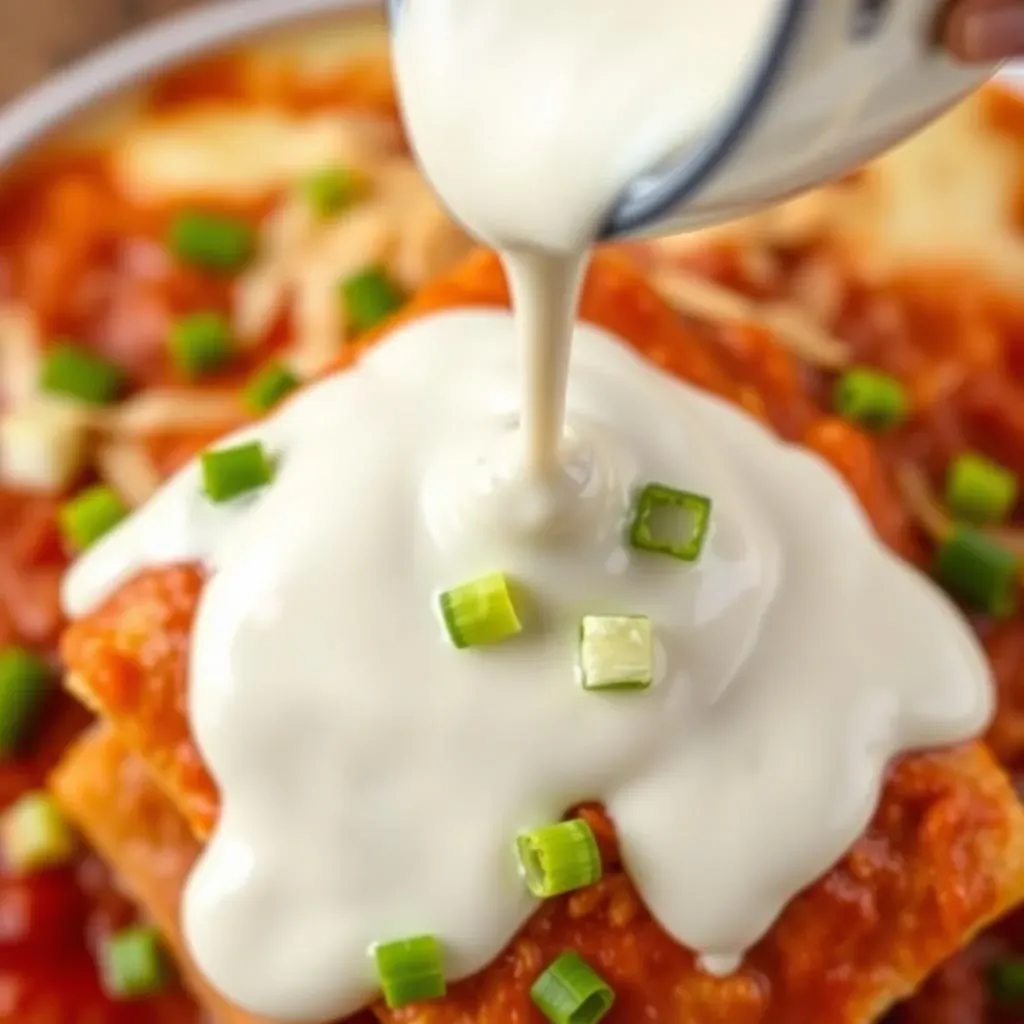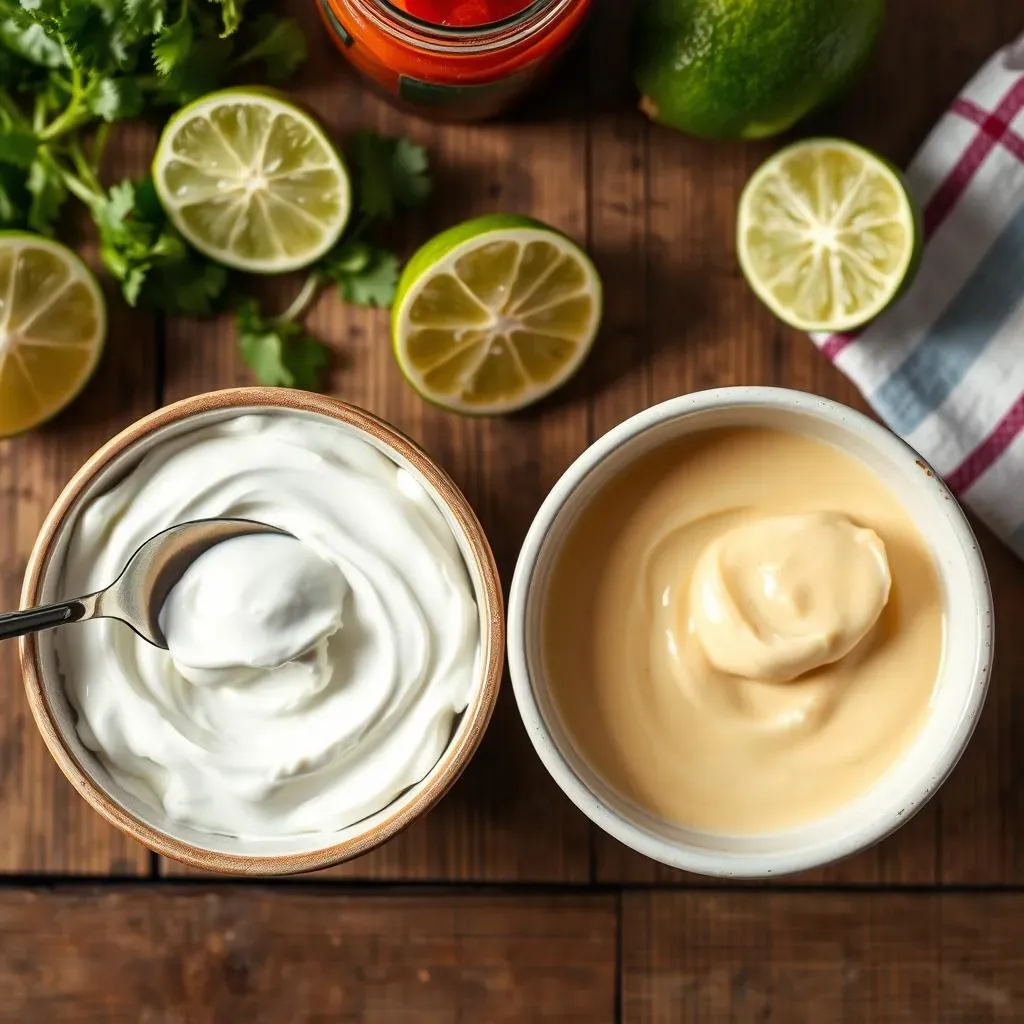Table of Contents
Ever stared down the dairy aisle, caught in the crossfire of sour cream vs. Mexican crema? You're not alone. These two creamy contenders often get mixed up, but they each bring something unique to the table – or, more accurately, to your tacos, soups, and desserts. We're about to dive deep into the delicious details, exploring the key differences in flavor, texture, and culinary applications. Forget bland comparisons; this is a head-to-head showdown that'll arm you with the knowledge to confidently choose the right creamy companion for every dish. From unraveling the tangy origins of sour cream to discovering the subtle sweetness of Mexican crema, get ready to elevate your cooking game. By the end of this article, you'll not only know the difference, you'll be a dairy aisle pro, ready to conquer any recipe that calls for a dollop of creamy goodness. So, grab a spoon, and let's get started!
What is Sour Cream? Unpacking the Tangy Classic

What is Sour Cream? Unpacking the Tangy Classic
The Basics of Sour Cream
Sour cream, that tangy dollop of deliciousness, is a dairy product made by fermenting regular cream with specific kinds of lactic acid bacteria. These bacteria work their magic, thickening the cream and creating that distinctive sour flavor we all know and love. It's a pretty straightforward process, but the result is a versatile ingredient that can elevate everything from baked potatoes to decadent desserts.
Think of it as the cool, slightly rebellious cousin of regular cream. While regular cream is sweet and mild, sour cream has a zing that adds a welcome contrast to rich or savory dishes. It's this unique flavor profile that makes it such a staple in so many cuisines. It's not just for topping things either; it's a fantastic ingredient for baking, adding moisture and a subtle tang to cakes and muffins.
A Peek into Production
The sour cream production involves pasteurizing the cream first to eliminate any harmful bacteria. Then, the cream is inoculated with lactic acid bacteria, and this mixture sits at a controlled temperature, allowing the bacteria to ferment the cream. The lactic acid produced during fermentation is what gives sour cream its signature tang and thick texture. Once the desired acidity and thickness are reached, the sour cream is cooled to halt the fermentation process and packaged for sale.
Now, you might be wondering about the different types of sour cream you see on the shelves. There's full-fat, reduced-fat, and even non-fat versions. The main difference lies in the fat content, which affects the richness and texture. Full-fat sour cream is the creamiest and most decadent, while reduced-fat and non-fat options offer a lighter alternative without sacrificing that characteristic sour flavor. In my opinion, full-fat is the way to go for the best flavor, but it all boils down to personal preference and dietary needs.
Type of Sour Cream | Fat Content | Typical Use |
|---|---|---|
Full-Fat | Around 20% | Toppings, dips, baking |
Reduced-Fat | Around 10% | Lighter options for toppings and dips |
Non-Fat | Less than 0.5% | Lower calorie alternative |
Decoding Mexican Crema: A Milder, Creamier Cousin

Decoding Mexican Crema: A Milder, Creamier Cousin
The Essence of Crema Mexicana
Mexican crema, often hailed as the smoother, gentler sibling of sour cream, is a dairy product that adds a touch of elegance to countless dishes. Originating from Mexico, this cultured cream is traditionally made by fermenting heavy cream with buttermilk and a touch of salt. The result is a luscious cream with a slightly tangy, yet notably milder flavor compared to sour cream. It boasts a thinner consistency, making it perfect for drizzling over your favorite Mexican delights.
Imagine a velvety blanket of creamy goodness cascading over enchiladas or a delicate swirl atop a steaming bowl of tortilla soup. That's the magic of Mexican crema. Its subtle tang complements, rather than overpowers, the other flavors in a dish. This makes it incredibly versatile, suitable not only for savory applications but also for adding a touch of richness to desserts. It’s the kind of ingredient that elevates a simple meal into something truly special.
Production and Variations
The production of Mexican crema involves a fermentation process similar to sour cream, but with key differences that influence its final characteristics. The use of buttermilk as a starter culture contributes to its milder flavor profile. Also, the cream is often not fermented for as long as sour cream, resulting in a thinner, more pourable consistency. This makes it easier to drizzle and incorporate into various dishes without clumping or separating.
Like sour cream, Mexican crema also comes in different variations, although they are not as widely available. You might find versions with slightly different fat contents or added ingredients like lime juice for an extra zing. However, the core characteristics remain consistent: a mild, slightly tangy flavor and a smooth, pourable texture. This consistency makes it ideal for finishing dishes, adding a touch of elegance and richness without the pronounced tang of sour cream.
Feature | Crema Mexicana |
|---|---|
Flavor | Mildly tangy, slightly sweet |
Texture | Thin, pourable |
Typical Uses | Topping tacos, enchiladas, soups; drizzling over desserts |
Sour Cream vs. Mexican Crema: Key Differences Unveiled

Sour Cream vs. Mexican Crema: Key Differences Unveiled
Flavor Face-Off: Tang vs. Mild
Let's get straight to the taste buds. The most obvious difference between sour cream vs. Mexican crema is their flavor profile. Sour cream packs a tangy punch, thanks to that lactic acid fermentation. It's a bright, assertive flavor that can cut through richness and add a zesty kick to dishes. Mexican crema, on the other hand, is much more mellow. It has a slight tang, but it's balanced by a subtle sweetness and a creamy richness that's incredibly smooth on the palate.
Think of it this way: sour cream is like a squeeze of lemon, while Mexican crema is more like a gentle drizzle of honey. Both add something special, but they cater to different flavor preferences. If you're looking for a bold, tangy flavor to wake up your taste buds, sour cream is your go-to. But if you prefer a more subtle, creamy flavor that complements without overpowering, Mexican crema is the clear winner.
I've found that some people who find sour cream too intense absolutely love Mexican crema because of its milder flavor. It's all about finding the right balance for your palate and the dish you're creating.
Texture Talk: Thick vs. Thin
Beyond flavor, texture plays a crucial role in differentiating sour cream vs. Mexican crema. Sour cream is known for its thick, dense consistency. It's almost like a spread, holding its shape well and adding a substantial mouthfeel to whatever it tops. This thickness comes from the specific bacteria used in the fermentation process and the higher fat content in some varieties.
Mexican crema, in contrast, is significantly thinner and more pourable. It has a looser consistency, similar to heavy cream that's been lightly thickened. This makes it ideal for drizzling over dishes, as it flows easily and evenly without clumping. The thinner texture also means it blends seamlessly into sauces and soups, adding richness without making them overly heavy.
I once tried to substitute sour cream for Mexican crema in a sauce recipe, and it ended up being way too thick. The texture difference really does matter! It's these subtle nuances that make each ingredient unique and essential in its own right.
Fat Content and Stability
Another key difference lies in the fat content and how each product behaves when heated. Sour cream typically has a higher fat content than Mexican crema, especially in its full-fat form. This contributes to its rich flavor and thick texture. However, it also means that sour cream is more prone to curdling or separating when exposed to high heat.
Mexican crema, with its lower fat content and different formulation, tends to be more stable when heated. It can be added to hot dishes without as much risk of curdling, making it a better choice for sauces, soups, and other cooked applications. This heat stability is a major advantage, especially when you're looking to add a creamy element to a dish without compromising its texture or appearance.
So, if you're planning to use a creamy topping on a dish that will be baked or simmered, Mexican crema is generally the safer bet. It will maintain its smooth, luxurious texture, while sour cream might become grainy or separated.
Feature | Sour Cream | Mexican Crema |
|---|---|---|
Flavor | Tangy, assertive | Mildly tangy, slightly sweet |
Texture | Thick, dense | Thin, pourable |
Fat Content | Higher | Lower |
Heat Stability | Less stable, prone to curdling | More stable, less likely to curdle |
When to Use Sour Cream vs. Mexican Crema: A Culinary Guide

When to Use Sour Cream vs. Mexican Crema: A Culinary Guide
Tacos, Nachos, and Beyond: Topping Strategies
When it comes to topping your favorite Mexican dishes, the choice between sour cream vs. Mexican crema really boils down to personal preference and the overall flavor profile you're aiming for. For dishes where you want a pronounced tang to cut through richness – like loaded nachos, cheesy quesadillas, or hearty chili – sour cream is an excellent choice. Its bold flavor stands up well against strong spices and heavy ingredients. However, if you're seeking a more subtle, creamy finish that complements the other flavors without overpowering them, Mexican crema is the way to go. It's perfect for drizzling over tacos al pastor, enchiladas verdes, or even a simple black bean soup.
I like to think of it as matching the intensity of the topping to the intensity of the dish. Big, bold flavors call for sour cream, while more delicate dishes benefit from the gentle touch of Mexican crema. Consider the other ingredients and how they interact – do you want a tangy contrast or a smooth harmony? That's your key to choosing the right topping.
Sauces, Soups, and Dips: Incorporation Techniques
When incorporating sour cream vs. Mexican crema into sauces, soups, or dips, it's important to consider their different textures and heat stabilities. Sour cream, with its thicker consistency, can add body and richness to cold dips like French onion dip or creamy cucumber salad. However, it's not ideal for hot sauces or soups, as it tends to curdle when heated. If you're looking to add a creamy element to a warm dish, Mexican crema is the better choice. Its thinner texture blends seamlessly into sauces and soups without separating, and its lower fat content makes it more stable at higher temperatures.
For example, I love using Mexican crema to finish a creamy tomato soup or to add a touch of richness to a homemade queso dip. It blends beautifully and adds a subtle tang that elevates the flavor. On the other hand, I'd reach for sour cream to make a classic ranch dip or a tangy coleslaw dressing.
Dish Type | Recommended Dairy | Reason |
|---|---|---|
Toppings for Tacos & Nachos | Sour Cream (for bold flavor) or Mexican Crema (for subtle creaminess) | Flavor intensity and desired contrast |
Cold Dips | Sour Cream | Adds thickness and tangy flavor |
Warm Sauces & Soups | Mexican Crema | Heat stability and smooth blending |
Baking Adventures: Cakes, Muffins, and More
Believe it or not, both sour cream vs. Mexican crema can be used in baking, but they each bring different qualities to the table. Sour cream is a popular ingredient in cakes and muffins, as it adds moisture and a subtle tang that enhances the flavor. It also helps to create a tender crumb and a moist texture. Think of classic sour cream coffee cake or tangy lemon muffins – sour cream is the star ingredient.
While Mexican crema is less commonly used in baking, it can still add a touch of richness and moisture to certain recipes. Its thinner consistency makes it ideal for adding to batters where you don't want to add too much thickness. I've experimented with using Mexican crema in quick breads and even some cookie recipes, and it adds a subtle creaminess that's quite delightful. However, it's important to adjust the other ingredients accordingly to account for the difference in texture and fat content.
Beyond Toppings: Creative Uses for Sour Cream and Mexican Crema

Beyond Toppings: Creative Uses for Sour Cream and Mexican Crema
Elevating Everyday Dishes: Unexpected Twists
Let's move beyond toppings and explore how sour cream vs. Mexican crema can add a creative twist to your everyday cooking. Both of these dairy delights can be used in ways you might not have considered, opening up a world of culinary possibilities. Sour cream, with its tangy flavor, can be a fantastic addition to mashed potatoes, scrambled eggs, or even pancake batter. It adds moisture, richness, and a subtle tang that elevates these simple dishes to a whole new level. Mexican crema, on the other hand, can be used to create creamy salad dressings, flavorful marinades, or even as a base for decadent ice cream. Its milder flavor and thinner consistency make it incredibly versatile.
I once added a dollop of sour cream to my mashed potatoes on a whim, and it was a game-changer! The tanginess cut through the richness of the butter and added a delightful complexity to the flavor. Since then, I've been experimenting with adding sour cream to all sorts of dishes, from soups to sauces, and the results have been consistently delicious. And don't even get me started on Mexican crema ice cream – it's the perfect balance of sweet and tangy, with a creamy texture that's simply divine.
Dish | Creative Use | Benefit |
|---|---|---|
Mashed Potatoes | Add sour cream | Tangy flavor, added moisture |
Scrambled Eggs | Add sour cream | Richness, creamy texture |
Pancake Batter | Add sour cream | Moisture, subtle tang |
Salad Dressing | Use Mexican crema as a base | Creamy texture, mild flavor |
Marinades | Add Mexican crema | Tenderizes meat, adds flavor |
Ice Cream | Use Mexican crema as a base | Unique flavor, creamy texture |
Sour Cream vs. Mexican Crema: A Culinary Friendship, Not a Feud
So, who wins the battle of sour cream vs. Mexican crema? The truth is, there's no single victor. Both bring their own unique strengths to the culinary arena. Sour cream offers that signature tangy zing and holds its shape beautifully, while Mexican crema provides a milder, slightly sweeter creaminess that's perfect for drizzling. The real takeaway is understanding their differences so you can choose the perfect creamy complement for your next dish. Experiment, explore, and let your taste buds be your guide. After all, cooking is about creativity and flavor, and both sour cream and Mexican crema are ready to help you create something delicious.